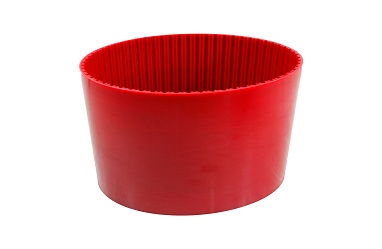The synchronous belt drive is composed of a closed annular belt with equidistant teeth on the inner peripheral surface and a corresponding pulley. When moving, the belt teeth mesh with the tooth slot of the pulley to transmit motion and power, which is a kind of meshing transmission, so it has various advantages of gear transmission, chain transmission and flat belt transmission. Synchronous belt drive has accurate transmission ratio, no slip, constant speed ratio, precise transmission, stable transmission, shock absorption, low noise, large transmission speed ratio range, generally up to 1:10, and the allowable linear speed can be Up to 50m/s, high transmission efficiency, generally up to 98%-99%. Delivering power from a few watts to hundreds of kilowatts. The compact structure is also suitable for multi-axis transmission, with low tension force, no lubrication and no pollution, so it can work normally in the occasions where pollution is not allowed and the working environment is relatively harsh.
Timing belts can be divided into neoprene plus fiber rope timing belts and polyurethane plus steel wire timing belts according to the material. According to the shape of the teeth, they are mainly divided into two categories: trapezoidal teeth and circular arc teeth. According to the arrangement surface of the belt teeth, they can be divided into Single-sided tooth timing belt and double-sided tooth timing belt.



 English
English 中文简体
中文简体 عربى
عربى















